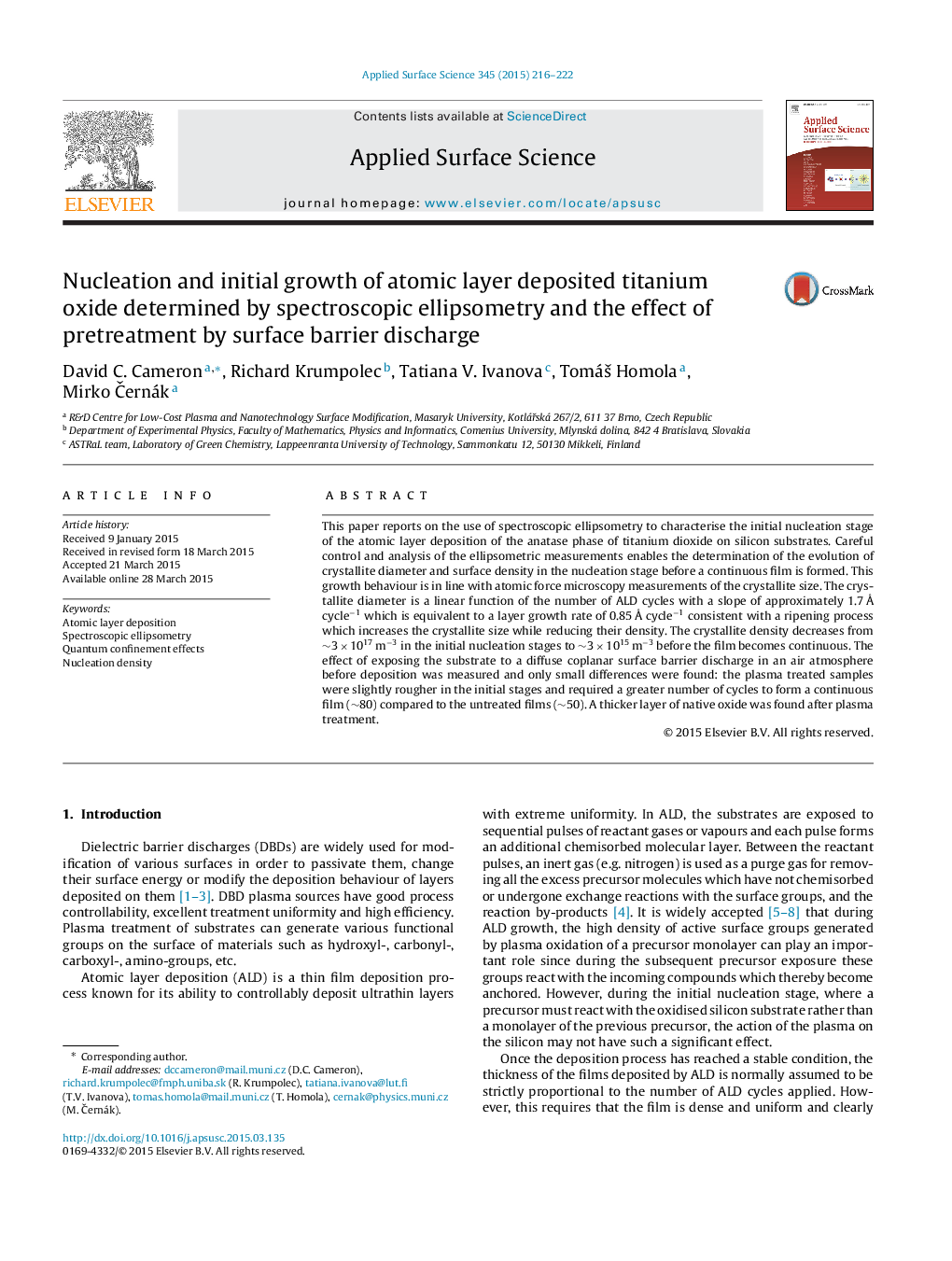| Article ID | Journal | Published Year | Pages | File Type |
|---|---|---|---|---|
| 5355151 | Applied Surface Science | 2015 | 7 Pages |
Abstract
This paper reports on the use of spectroscopic ellipsometry to characterise the initial nucleation stage of the atomic layer deposition of the anatase phase of titanium dioxide on silicon substrates. Careful control and analysis of the ellipsometric measurements enables the determination of the evolution of crystallite diameter and surface density in the nucleation stage before a continuous film is formed. This growth behaviour is in line with atomic force microscopy measurements of the crystallite size. The crystallite diameter is a linear function of the number of ALD cycles with a slope of approximately 1.7Â Ã
cycleâ1 which is equivalent to a layer growth rate of 0.85Â Ã
cycleâ1 consistent with a ripening process which increases the crystallite size while reducing their density. The crystallite density decreases from â¼3Â ÃÂ 1017Â mâ3 in the initial nucleation stages to â¼3Â ÃÂ 1015Â mâ3 before the film becomes continuous. The effect of exposing the substrate to a diffuse coplanar surface barrier discharge in an air atmosphere before deposition was measured and only small differences were found: the plasma treated samples were slightly rougher in the initial stages and required a greater number of cycles to form a continuous film (â¼80) compared to the untreated films (â¼50). A thicker layer of native oxide was found after plasma treatment.
Keywords
Related Topics
Physical Sciences and Engineering
Chemistry
Physical and Theoretical Chemistry
Authors
David C. Cameron, Richard Krumpolec, Tatiana V. Ivanova, TomáÅ¡ Homola, Mirko Äernák,
